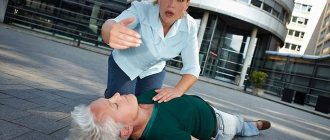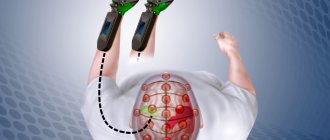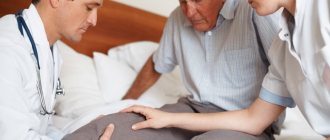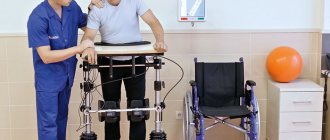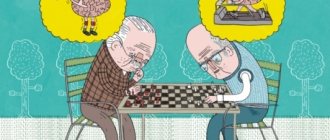Rehabilitation at home » Stroke rehabilitation at home
Our medical center provides rehabilitation services after stroke at patients' homes.
Stroke is a group of pathologies that are characterized by impaired cerebral circulation. Most often, people are affected by ischemic stroke, or cerebral infarction.
The second most common stroke among strokes is cerebral hemorrhage, which is no less dangerous. Another small proportion refers to the so-called subarachnoid hemorrhage.
Home rehabilitation services
| Name of service | Cost, rub.) |
| Visit of a neurologist with preparation of an individual rehabilitation program | From 5 000 |
| Departure of a neurologist – Ph.D. with the preparation of an individual rehabilitation program and consultation (prescribing medication) | From 10 000 |
| Departure of the Doctor - exercise therapy | From 4 000 |
| Departure of a Doctor - Therapist | From 5 000 |
| Departure of a doctor - Cardiologist | From 5 000 |
| Departure of a doctor - Physiotherapist | From 5 000 |
| Visit of a doctor - Urologist | From 5 000 |
| Departure of a doctor - Neuropsychologist | From 4 000 |
| 1 lesson with a doctor – Neuropsychologist | From 4 000 |
| 1 lesson with a physical therapy instructor | From 3 500 |
What is rehabilitation based on?
In order to quickly return a person to normal life, or at least minimize the consequences of a stroke, doctors have developed various rehabilitation methods. They are based on movement, since after a stroke a person loses the ability to move - as a rule, one half of the body is affected.
Medical science has long established that our brain is the center of the body, which controls the functioning of all other organs. It may seem to a person that he moves his arms and legs as a matter of course, but this is not the case.
Any movement is a set of impulses that are transmitted from the brain to the muscles, causing them to move. During a stroke, the supply of blood to brain cells and, as a result, oxygen and nutrients is disrupted. Cells die in huge numbers - much more than, for example, when drinking alcohol or from any diseases.
From a stroke, cells die in entire foci that are responsible for the functioning of a particular organ. However, this does not mean that such a person can be given up.
Millions of healthy cells remain in the brain, which are not used in “normal” life, or perform other functions. It is these that need to be developed in order to regain lost motor ability. Moreover, it is quite possible to do this, since stroke manifests itself differently in different people. Some people have difficulty speaking, others have limited arm movement, and still others have problems with their legs. In any case, hidden reserves in the body can always be found.
The most important thing is to approach the rehabilitation process correctly. Essentially, the body will have to relearn how to perform simple functions, but the results will be worth it.
To put it simply, during rehabilitation after a stroke, the process is reversed. In a healthy person, the brain controls the activities of the entire body.
During the rehabilitation process, the patient, under the guidance of a doctor, “develops” the body, and it, in turn, “forces” the brain to work in a new way. It’s not for nothing that doctors recommend playing sports to improve health. Even if a modern person cannot find time for full-fledged training, he needs at least jogging or walking in the fresh air.
Physical activity is the key to health, which is confirmed not only by athletes, but also by research by doctors. Therefore, by forcing an arm or leg to move, a person stimulates the activity of millions of nerve endings. The same can be said about restoring speech function, since there are a lot of facial muscles, and it is impossible to make them work again in any other way other than movement.
Of course, carrying out all kinds of procedures requires energy expenditure. Something from which a person previously did not experience even a hint of fatigue, during rehabilitation after a stroke can become a difficult task that will require all the body’s strength. Therefore, the rehabilitation process involves taking medications that will nourish the nerve cells with energy. This is normal practice, since treatment of the consequences of a stroke requires a comprehensive approach due to the seriousness of the disease.
What can you do to help a loved one who has suffered a stroke recover faster?
Start as early as possible
In the first 6 months after a stroke, restoration of damaged brain structures occurs most intensively. From 6 months to 2 years the results are worse. After 2 years, the effect is almost impossible to achieve. Remember this.
Moving is living
Even before discharge from the hospital, passive gymnastics, the so-called positional treatment, is prescribed. This means that the patient's arms and legs are positioned in a certain way so that the muscles stretch and receive stress. After 2-3 weeks, active movements begin, gradually increasing the load under the supervision of a doctor.
Restore speech
Talk to your loved one regularly. Do articulation exercises with the victim, sing, repeat rhymes and tongue twisters. It takes time. But the result is worth it.
Restore self-care skills
Anyone who has experienced this has to learn again - to eat, dress, brush their teeth, use the bathroom and toilet, and much more. Your task is to help with this.
Acupuncture: affects both the affected brain and the body as a whole.
The procedure starts the self-healing process. Clinical studies have shown that acupuncture helps relax muscles, increases blood flow to the brain, and stimulates the growth of new nerve endings and the formation of connections between nerve cells. This means that the victim begins to move faster, becomes independent faster and feels better. And it makes the task of caring easier for you. How it works? First, diagnostics are carried out using the methods of Eastern and Western medicine, then, depending on the identified deviations, the doctor draws up a prescription - a certain set of biologically active points into which needles are inserted for a certain time and depth. During the first sessions of needle insertion, the patient may not feel anything, but after the 3-4th session, sensitivity returns, and the patient’s condition gradually begins to improve. To achieve the effect faster, it is important to start acupuncture sessions as early as possible - immediately after discharge from the hospital.
Manual therapy restores movement
The techniques of manual therapy used by oriental “manipulators” differ significantly from those standard movements that are used to “set prolapsed vertebrae.” Eastern manual therapy begins with a warming massage. then the doctor finds painful places and performs certain movements. How does this help fight the consequences of illness? — During a manual therapy session, deep work is done with the muscles, the correct position of the limbs and spine is restored, displacements and muscle spasms go away, and pain in the joints stops. The first sessions may be painful. As you recover, uncomfortable sensations disappear, movements become freer, and your mood improves.
Massotherapy
Only gentle techniques are used that relax spasmodic muscles, improve blood circulation, relieve pain, and prevent the development of contractures. Massage helps avoid congestive pneumonia and bedsores - common complications after a stroke. The combination of manual techniques and acupuncture helps to achieve results faster and return to normal life. Both massage and manual therapy are carried out after a thorough diagnosis. The session lasts from 30 minutes or longer, depending on the indications and condition. Therapeutic massage “oriental style”, like acupuncture, is aimed at acupressure; cupping and gouache massage are often used.
Osteopathy
Treating the consequences with osteopathy improves cerebral circulation, accelerates metabolism in nerve cells, eliminates muscle spasms, facilitates the restoration of movements and the functioning of internal organs, and normalizes blood pressure. Osteopathy also affects the psychological state of patients - after sessions, mood, well-being and sleep improve.
What is the rehabilitation process like after a stroke?
Before recovery from a stroke begins, the patient must undergo a thorough medical examination.
First of all, the diagnosis is carried out by a neurologist and a physical therapy doctor (PT). Further, depending on the degree of damage to the body, other doctors are involved in the treatment - for example, a therapist, a traumatologist, a surgeon and others. Examinations and tests are carried out in order to exclude complications that may arise during treatment procedures.
Diagnostics includes daily cardiograms to determine the heart’s ability to withstand certain loads, as well as ultrasound examination (ultrasound). It is necessary in order to assess the level of potential danger of blood clots during treatment.
When all diagnostic measures have been completed, doctors select the optimal recovery course. Depending on the characteristics of the body and the severity of the stroke, the course activities may vary. Some patients first need to learn how to control their breathing correctly, while others learn to walk again from the very first procedure.
Often, exercise alone is not enough for successful rehabilitation after a stroke.
For more effective recovery, doctors have developed special simulators and equipment that stimulate the functioning of muscles and nerve cells. They act on the muscles mechanically, preventing them from stagnating and maintaining their volume.
In addition, such devices improve blood flow and reduce pain, since it cannot be said that after a stroke a person completely ceases to feel a particular part of the body. The group of auxiliary materials also includes “passive” means. These include all kinds of corsets, tapes, bandages, etc., which fix the damaged limb in a certain position, replacing the functions of the joints and muscles.
Unfortunately, the rehabilitation process does not always allow a person to fully regain the abilities lost during a stroke. In this case, the doctors’ task is to bring him as close as possible to this, and in a broader sense, to show that a bright and rich life is possible even after a stroke, if you believe in yourself and receive support from others.
A set of exercise therapy exercises after a stroke
Immediately after the recovery of consciousness of a patient who has suffered a stroke, rehabilitation therapists begin performing passive exercise therapy. The exercise therapy instructor bends and straightens the patient’s paralyzed arm, moves it to the side and makes rotational movements with it. Such exercises are carried out daily. Their duration ranges from ten minutes to half an hour. At the same time, during one lesson they take 2-3 short breaks so that the muscles that have “forgot” how to work get a few minutes of rest.
The patient, lying on his back, is taken by both ankles, and his lower limbs are alternately flexed and straightened. The exercise resembles a “bicycle”, but the patient’s feet should not leave the bed. The patient, who is forced to maintain a horizontal position, can perform the following exercises independently.
Move your gaze up and down, from side to side, roll your eyes. These movements are performed first with closed, then with open eyes at an average pace. Each movement must be repeated 10 times. At the end of the exercises, you need to close your eyes and lightly stroke your eyelids with your fingers. Then you should open your eyes and blink vigorously several times.
The patient can squeeze and unclench his eyelids 10-15 times at an average pace. The patient can look at a certain point located directly in front of him, and, without looking away, turn his head to the right, then to the left. It is recommended to perform 5-6 turns in each direction.
To restore the function of the neck muscles, you need to carefully turn your head left and right, while fixing your gaze in front of you. Then it is recommended to bend and straighten your fingers 10 times.
To perform the following exercise, you need to hang a towel in the form of a loop over the bed. Thread a fixed upper or lower limb into a loop and simply swing it with different amplitudes.
Elbow joints need to be developed using the following exercise:
- the patient lies on his back, arms are located along the body;
- bend your right arm at the elbow and lower it onto the bed;
- Make similar movements with your left hand.
It is necessary to perform the exercise with each hand 10 times. Lying on your back, you can alternately bend and straighten your knees 10 times.
Once the neurologists allow the patient to sit up in bed, the exercise program becomes more complex. Now you need a set of exercises depending on the severity of the neurological dysfunction. Rehabilitation specialists, together with neurologists at the Yusupov Hospital, draw up an individual rehabilitation plan aimed at maximizing the restoration of the existing defect.
In the early recovery period, exercises are prescribed aimed at:
- increased muscle strength;
- reduction and normalization of increased muscle tone;
- normalization and elimination of atactic disorders, including balance functions;
- restoration of muscle-joint sensation;
- restoration and automation of the most important motor skills (standing, walking, household self-care).
In the late recovery period, exercise therapy after a stroke is aimed at compensating for impaired functions, based on the inclusion of intact links and their functional restructuring.
Rehabilitation after a stroke at home
Recovery after a stroke is a long process during which a person cannot stay in a medical facility all the time. This takes several months - public hospitals cannot always accommodate all patients, and treatment in private clinics is too expensive. On top of everything, a person who has suffered a stroke wants to spend more time with his family and friends.
Stroke most often affects older people or middle-aged people who already have families. The desire to be close to them is understandable, since a stroke is not only a physical illness, but also a serious psychological trauma.
The optimal solution in this case would be to conduct rehabilitation after a stroke at home. It does not require constant hospitalization, but at the same time is carried out under the supervision of a doctor.
Of course, the patient must periodically undergo diagnostics in the clinic, but this is much easier to tolerate than constantly being in a hospital ward.
Results of rehabilitation procedures after stroke
In our Multidisciplinary Treatment and Rehabilitation Center, you or your relatives can receive consultations with doctors for rehabilitation after a stroke at home.
Thanks to the measures developed by our specialists, you will notice improvements in your health in a short time after starting the procedures. Our comprehensive program is aimed at restoring the following body functions:
- Improving cerebral circulation
- Restoring the functions of the spine as the main “pillar” of the human body. If the spine is able to keep the body straight, other activities will be easier
- Restoring motor functions of the injured hand
- Restoring musculoskeletal functions of the injured leg
- Restoration of step phases, that is, events during which a person actually learns to walk again
- Restoration of speech function, work with a speech therapist
- Restoration of primary household skills
- Normalization of psycho-emotional background
One of the primary tasks of the recovery period after a stroke is the restoration of motor function of the limbs. It is to them that the neurological deficit in this disease is largely confined. You need to start restoring movements almost from the first day after the stroke occurs.
General features of the exercises are characterized by the following points:
1. Decreased muscle tone and tension. Any stroke causes paralysis, characterized by muscle hypertonicity and increased excitability;
2. Improved microcirculation. A stroke disrupts the innervation of all tissues. As a result, their blood supply is disrupted;
3. Prevention of contracture. Against the background of long-term neurological deficit and spastic paralysis, stiffening of the muscles, which are in a state of constant tension, additionally occurs;
4. Protection of the skin of the extremities from bedsores. This is especially true for the legs. In places of greatest pressure and contact, which are the heel areas, bedsores most often occur;
5. Resumption of subtle movements. They are among the most important functions of the limbs, which actually characterize the complete restoration of the nervous system. This is most relevant for the hands and upper limbs in general.
Before starting any exercises after a stroke, it is advisable to consult with your doctor, or even better, with a specialist - a rehabilitation specialist. It will help you not only choose the right set of exercises, but also tell you about all the subtleties and stages of their implementation. In general terms, it is worth pointing out this feature: all exercises should begin from simpler ones with a gradual expansion of their volume depending on the patient’s functional abilities.
Against the background of physical therapy, even patients with an identical problem and severity of stroke can recover differently. Therefore, you should not overload a person too much. This is just as harmful as no therapeutic exercises at all. Before performing any set of exercises, it is better to warm up the tissues on which their action will be directed. If possible, warm water procedures are suitable for these purposes. If there are contraindications or other reasons why this action is not feasible, a light massage for 15 minutes immediately before exercise will be sufficient. As a last resort, you can warm the affected limbs using a heating pad.
All patients after severe strokes with severe neurological deficits must be helped by someone close to them, since they are not able to cope with such a task on their own. It is better if the set of exercises is performed 2-3 times a day in short courses that take about one hour. They should not cause severe fatigue and overwork in the patient. If any arise, this indicates an incompatibility between the loads and the patient’s actual abilities at a specific stage of the rehabilitation period.
A strict individual approach with strict adherence to the general rules of physical therapy can be called the only right step towards the rapid recovery of patients after a stroke.
Exercises while in bed
Of course, in this case it is extremely difficult to do anything on a large scale, since the functional abilities of patients are very limited. Therefore, it is necessary to help the people around such patients. This set of exercises should be performed by all persons in the acute period after any stroke, as well as by those who have severe spastic paralysis of the limbs with a pronounced increase in muscle tone. Such patients are unable to straighten their limbs, as they are firmly fixed in a bent position. Exercises should be aimed at reducing tone and gradually increasing the range of movements.
A typical gymnastics routine looks like this:
1. Simple extension and flexion of fingers and hands, forearms and elbows, feet and knees, movements of the limbs in the shoulder and hip joints;
2. Rotational movements of the indicated segments. Performed with the help of those caring for the sick. They should imitate the movements that a healthy person is capable of performing;
3. Exercise to restore the arm. Stretching spasmodic limbs using splints and other devices. Indicated for persistent paralysis. To do this, the bent limb is gradually unbent from the fingers and fixed with a bandage to a hard flat board or other device. The same actions are carried out step by step with the overlying areas of the hand (hand and forearm). In this position, the limb is fixed for half an hour, but it can be longer if it does not cause discomfort to the patient;
4. A towel is hung above the bed. The following exercise can be performed by persons with restored hand function. To do this, grab the towel with it and perform all possible movements (abduction and adduction, raising and lowering at the shoulder, flexion and extension at the elbow). Gradually the towel is raised higher and the exercises are made more difficult by the patient’s own weight;
5. From a strip of rubber of medium thickness and width, you need to make a ring with a diameter of 40 cm. Using this device, you can perform a large number of exercises. It is thrown between the hands, forearms, arm and leg, hand and any object. At the same time, the elastic band is stretched by moving its ends apart from each other;
6. To eliminate muscle spasm of the lower limb, a hard cushion is placed in the popliteal region, the thickness of which gradually increases. In this way, muscle stretching and increased range of motion are achieved;
7. Grasping the shins above the ankle joint with further flexion and extension of the legs at the knee joints by sliding the feet along the bed;
8. Lying in bed, you need to smoothly raise your arms above your head and try to grab the back of it. After this, partial pull-ups are performed with simultaneous stretching of the feet and fingers (as if stretching);
9. Exercises for the eyes. Restores the function of eyeball mobility and vision adaptation. To do this, you need to move your eyes in different directions several times. Circular movements. Repeat the procedure with closed eyelids;
10. Fixation of the gaze at one point, followed by rotational, nodding and circular movements of the head without moving away from this point of fixation;
Exercises while sitting
They are aimed at restoring purposeful arm movements, strengthening the back and preparing the legs for walking. Their technique is like this:
1. The patient is transferred to a sitting position and grabs the edges of the bed with his hands. As you inhale, you bend your back while simultaneously stretching your torso in a state of tension. As you exhale, relaxation follows. The cycle consists of 8-10 repetitions;
2. Starting position sitting on the bed, legs at body level (do not lower). Alternately raise and lower the left and then the right leg several times;
3. Starting position sitting in bed. Hands are pulled back. As you inhale, bring your shoulder blades as close as possible to each other while simultaneously throwing your head back. As you exhale, relaxation follows;
Exercises while standing
Indicated after expansion of the motor regime and partial recovery of the patient. Their main goal is to restore fine movements to maximize the elimination of neurological disorders. Typical examples look like this:
1. Lifting a matchbox from the floor or table. Practices targeted subtle movements;
2. Starting position standing with arms down. As you inhale, raise your arms above your head, simultaneously stretching and standing on your toes. As you exhale, relax, bending your torso down and lowering. Repeat several times;
3. Flexion and extension of the hand into a fist using an expander while simultaneously moving the arms away from the body;
4. In a standing position, feet shoulder-width apart, hands placed on the belt. The body is tilted to the right and left, back and forth;
5. From the previous starting position, perform the scissors exercise (alternately moving crossed arms outstretched in front of you to the opposite side;
6. Squats from a standing starting position with feet connected. During the exercise, you need to keep your back as straight as possible and not lift your heels off the floor;
While performing exercises related to the stage of restoration of fine movements, you can continue gymnastics from the previous stages, especially if it strengthens the muscles and expands the range of movements in general. Physical therapy using light dumbbells and strength exercises is allowed.
In order for physical therapy to truly be restorative in nature, it must become part of the patient’s lifestyle.
Rehabilitation techniques
Our methods are based on many years of experience in rehabilitation after stroke, as well as on our specialists’ own developments. Depending on the patient’s condition and the severity of the stroke, we provide treatment in the following ways:
- Verticalization. The most important technique, since it is precisely because of the immobility of the patient after a stroke that the greatest number of complications develop. Verticalization involves a process in which a person learns to take a vertical (at least sitting) position without outside help. In addition to the obvious “medical” advantages, the psychological factor is also important here, since it is much more comfortable for the patient to feel, literally, on the same level as relatives and doctors
- Mechanotherapy. It is a course of training on simulators aimed at restoring the motor functions of the affected limbs
- Physiotherapy. Conducted under the guidance of an instructor, and intended for patients in whose treatment there has been some progress
- Occupational therapy. This complex name is a technique that combines the knowledge and achievements of psychology, pedagogy, anatomy, biology and ergonomics. Occupational therapy sessions include special exercise equipment, group discussions, various games and even music therapy. The positive emotions that a person receives during these sessions have a beneficial effect on the rehabilitation process
- Sand treatment. Particles from the sand flow stimulate the excitation of nerve endings on the skin, and this information enters the brain. These feelings are only positive, so a person relaxes and gets rid of negative emotions
- Classes with a speech therapist. Necessary in cases where a stroke causes speech loss or impairment
- Working with psychologists. A stroke is a serious shock both for the person himself and for his relatives. During conversations with the doctor, the patient calms down and gains confidence in his abilities. This confidence on a subconscious level contributes to a speedy recovery, although the person himself does not think about it. For relatives of the patient, psychologists provide consultations on communicating with the patient outside the walls of the medical institution
- Drug treatment. Used to restore the vitality of the body and eliminate the consequences of a stroke
Typically, doctors prescribe several treatment methods from this list, which alternate with each other according to a specially developed program. The duration of this program is about three weeks. Procedures should be carried out at least three times a week for several hours a day. If this does not require special simulators, the procedures can be carried out at home according to the doctor’s recommendations.
Recovery in a boarding house
Rehabilitation of an elderly person after a stroke at home requires the full-time employment of one of the relatives for the next six months. While the patient is bedridden, he cannot be left at home alone for two reasons: he is helpless and it is necessary to deal with him several times a day. The volume of care is so large and multidirectional that soon the caregiver himself will need support and replacement.
In boarding houses for the elderly, professionals are involved in the rehabilitation of patients. Special equipment is used for treatment. An individual program is developed for each patient. Restoration methods that have been developed over the years produce positive results within a month.



